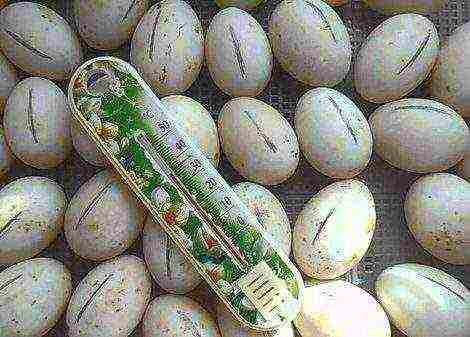Content
Geese linda in the household
According to legend, it was the geese that saved Rome from invading invaders in the 5th century BC. In the modern world, geese are not bred for the defense of fortresses and cities.
These waterfowl farm birds are a valuable source of feathers, fluff and tasty meat. One of the most popular varieties of domestic geese is the Lindovskaya breed, which is in high demand among farmers both in Russia and other countries.
Geese linda: breed description
The Nizhny Novgorod region is the birthplace of the linda geese. The Lindovskaya variety appeared as a result of the selection of representatives of local geese breeds with Chinese ones. In the future, this variety of waterfowl was improved by crossing with Solnechnogorsk geese, and then with representatives of the Arzamas and Landezhskaya breed.
As a result of such a selection, it was possible to bring out a precocious breed of geese, predominantly of a meat orientation, whose body weight already at the age of two months is about 4 kg.
Appearance and temperament
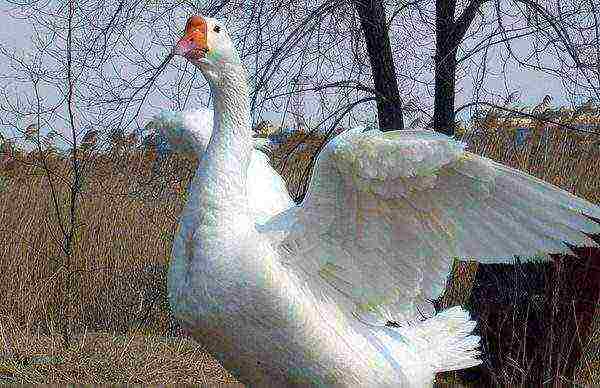
Individuals linda are characterized by a rather large, elongated constitution, white plumage and a peculiar bump in the area of the frontal zone. The beak and paws are orange in color with varying degrees of intensity. The bird's eyes are small, dark in color.
Females of the Lindovskaya breed in adulthood weigh about 7 kg, the weight of males fluctuates on average about 8 kg.
Conditions of keeping and growing
Unpretentiousness in the content refers to the advantage of this species of birds. Linda can easily endure even severe frosts in non-insulated poultry houses, the only thing is that there should be no drafts in the room.
The most optimal conditions for keeping a linda is a poultry house with a walking area adjacent to a pond with running water. In such conditions, birds will be able to receive the most balanced diet naturally.
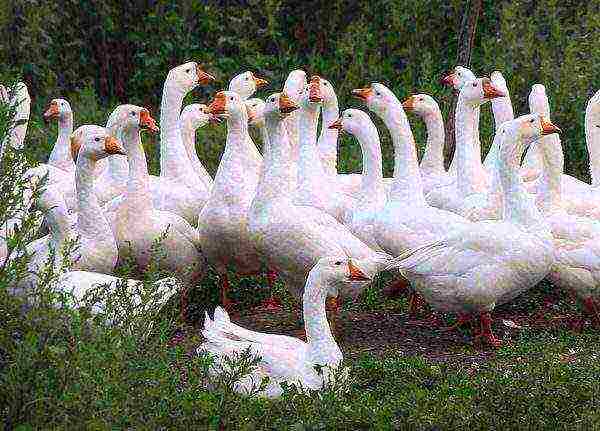
In the absence of a reservoir, special attention is paid to drinking bowls, in which fresh and clean water must always be kept.
However, Linda geese can also be kept in closed poultry houses, provided that there are no more than 1.5 - 1.7 birds per square meter of the cage or aviary. Overcrowding negatively affects birdswhich may become more painful, stop running, or lose feathering altogether.
In addition to space, lighting is another important factor in keeping birds of this species. Females stop laying eggs at 7 o'clock daylight. In order for the geese to fly, the lighting must be extended for at least 12 hours, followed by an hour monthly increase.
So, goslings aged 10 to 20 days need 16 hours of daylight, and chicks aged 20 days to one and a half months need 14 hours of daylight. In this case, a lighting mode with short interruptions is admissible for reasons of saving resources.
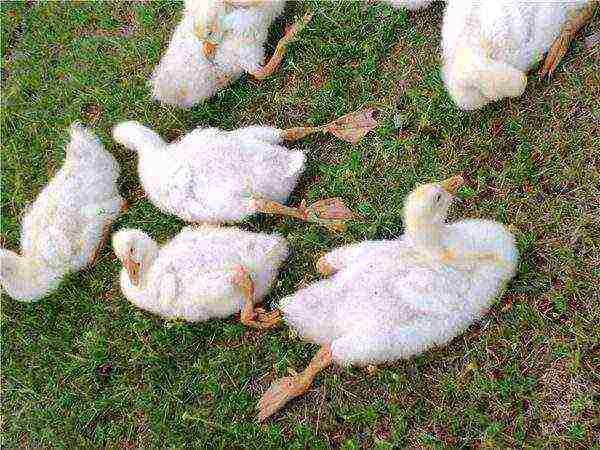
Draft-free, flowing water, and house lighting are key ingredients for successful Linda breeding.
Weights and characteristics
Linda geese are rather large representatives of the waterfowl family. The weight of individual individuals can reach 12 kg with an average of 8 kg for males and 7 kg for geese, respectively.
Chicks enter the period of maturity as early as 8 months, while already in the first 2-3 months, young goslings gain body weight around 4 kg. Linda geese meat has proven itself well, due to its softness and delicate rich taste.
These factors make Linda a leader among the beef breeds of waterfowl. The species is characterized by a relatively high egg production.
Egg production of the Lindovskaya breed

The number of eggs from one laying hen ranges from 50 to 65 pieces per year and falls on the spring. The weight of one egg is about 150-170 gr. More than 90% of all eggs are fertilized.
In an incubator, the viability of eggs is in the range of 70-80%. Of the hatched goslings, at least 90% of the chicks reach maturity. In part, such indicators are the merit of females, since Linda geese are also excellent hens.
One of the pledges of egg production is that females consume enough calcium and complete green food. In combination with long daylight hours, with these two factors, it is possible to achieve high productivity of eggs from this breed, both for consumption and for further breeding.
Feeding at home
In general, the diet is extremely important for Linda, because the birds have a good appetite. As a result of underfeeding, Linda geese begin to produce offspring sick with rickets, therefore, this variety of farm birds cannot be limited in food consumption.
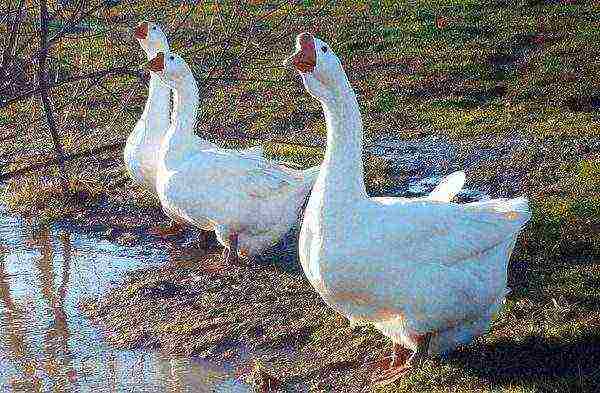
In the diet of goslings, it is preferable to use broiler feed with a high nutritional value. The most optimal the diet is selected taking into account the age of the young... The first two weeks are given a starter feed, the next two grower feed and, finally, a finisher feed until the chicks reach one and a half months of age.
In the absence of such an opportunity, multivitamin supplements are additionally included in the diet of the bird, the protein level in feed should be at least 14%.
Breeding features
Due to the high amount of food consumed, birds are slaughtered, as a rule, when they reach the 5 kg weight mark, leaving only valuable, from the point of view of breeding, individuals to ensure further offspring.
Despite the factor of high feed consumption, the breed has a high payback, due to the fact that the meat yield from one individual reaches 80%. In food, the birds are not picky. Linda's diet can also include complex specialized feed for chickens, grain, grass, root crops.
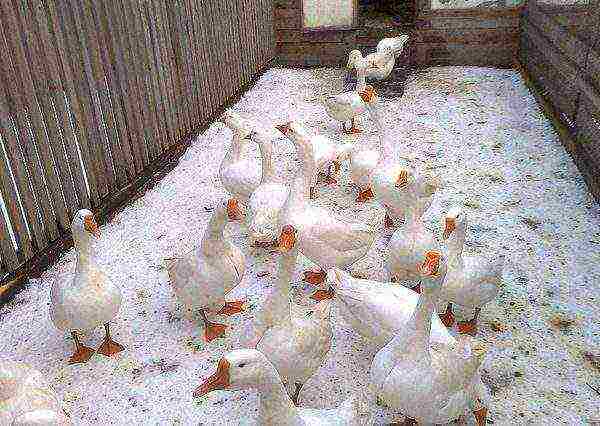
In addition to feeding and lighting, one of the features of breeding Linda geese is a special attitude towards young animals. In the period from 28 to 49 days, goslings grow feathers, which sharply increases the susceptibility of chicks to loud sounds and other irritating factors.
This should be taken into account by isolating the offspring from possible sources of noise. When feeding the brood, abrupt movements should be avoided.
Diseases, prevention and treatment
Linda geese, like other birds, are susceptible to various diseases, especially with improper care. The main requirements for preventing morbidity are keeping the house clean, timely vaccination and the absence of overcrowding. As a rule, before settling the young, the poultry house is thoroughly treated and disinfected.
All litter must be replaced, whitewashed on the inner walls and ceiling. Goslings are fed with a weak solution of potassium permanganate and glucose the next day after they have been hatched, in order to strengthen general immunity and increase resistance to pathogenic pathogens.
In the first weeks of life, chicks are vaccinated against viral enteritis, to which representatives of this breed are often exposed without proper preventive measures. In order to prevent the incidence of salmonellosis in young animals, goslings are fed every three months with preparations containing tilan.
Diseases found in linda geese:
- Enteritis is viral.
- Salmonellosis.
- Pasteurellosis.
- Aspergillosis.
- Hymenolepticosis.
Advantages and disadvantages
Thus, summing up, you can highlight the key points by collecting a description of the main advantages and disadvantages of the breed.
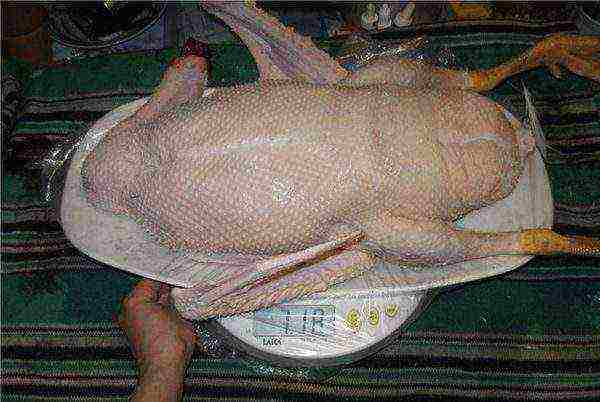
The disadvantages include:
- Difficulty breeding in the absence of free access to the reservoir. Although rearing linda in conditions of lack of access to water is possible, this has a significant impact on the final value of the livestock.
- High incidence hymenolepticosis of young animals. For prevention, it is advisable to mix goslings with algae into the feed.
- Avitaminosis... The Lindovskaya breed is extremely susceptible to vitamin deficiency, especially in the first half of spring. To avoid this, vitamin complexes and fresh grass are added to the feed.
- High noise level. Linda actively communicate with each other through gaggle, while the noise from several dozen individuals is quite noticeable.
But the above disadvantages more than cover the advantages of the breed:
- Frost resistance and endurance... Landas can tolerate both extremely cold and high hot temperatures, which allows linda to be bred in many regions. The only condition is the absence of drafts, which Linda geese literally cannot stand.
- Early maturity with excellent taste. At the age of 5 months, the bird gains about 7 kg of weight, and by the year the weight can reach 9-11 kg, however, from the point of view of high feed consumption, it is more expedient to slaughter young individuals when they reach a weight of 5-7 kg.
- High egg production against the background of other meat breeds. Given the good nutrition and normal living conditions in the house, layers of this breed are able to lay an egg per day for almost the entire spring.
- Indicators offspring survival... Linda chicks, like adults, are distinguished by high endurance and good immunity, which contributes to the survival of the litter over 90%.
- Peacefulness in character. Linda are not conflicted, they get along well with other birds from among their neighbors, which makes it possible for these geese to settle in a common poultry house.
- High payback... The profitability of breeding Linda geese with the correct content exceeds 100%, despite the high degree of food and energy consumption.
Conclusion

The availability of breeding, good characteristics, the absence of excessive requirements for care, nutrition and maintenance, undoubtedly, make the Linda waterfowl one of the most valuable representatives of this industry, as evidenced by numerous reviews of farmers engaged in breeding geese.
Farmers reviews
I myself have not kept and do not keep this breed. But I heard different things about her. One had, such a goose laid about 20 eggs and sat down to incubate and hatched. In others, two geese carried about 50 eggs and did not incubate. Another friend also has two geese carrying about 30 eggs and sitting down to incubate.
My friend also had three geese, I don’t know how many they carried, but I know that more than one goose didn’t sit down.And my friend also had such two geese carrying 20-30 eggs and sat down to incubate, but they sat badly ... Forum Farmer.ru
Linda will never pick up meat in the pasture, on the contrary, she does not want a lot of walking. This is an industrial bird and it is desirable to fatten it, then it will be similar to the declared weight. Ptitsevody.ru
Itself this year started Linda brought from Bashkiria with. Yazykovo Blagovarskiy breeding plant. There was no waste at all 100% survived. Now the goslings are 75 days old, good nipples weigh 6.5-7kg, the bird is just super. Forum International Compound

